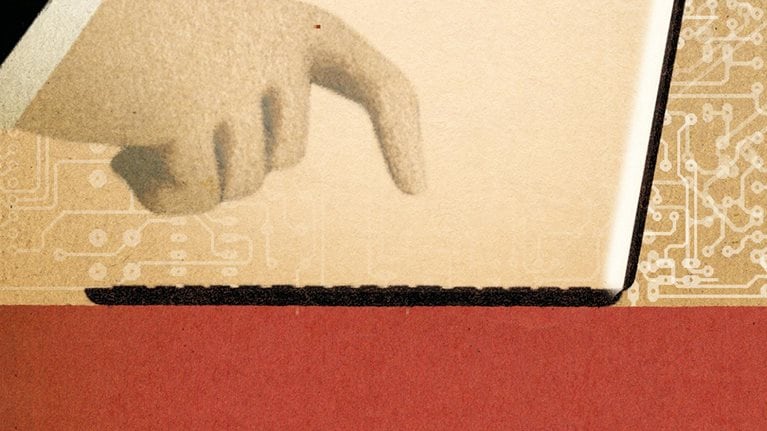Most companies face critical IT modernization issues, whether that means digitizing the customer purchasing experience, managing or moving away from aging software and hardware solutions, or shifting to newer technologies such as cloud-based computing, serverless computing, and microservices for delivering software.
Historically, companies have favored an incremental approach to modernizing IT—that is, addressing the most immediate points of pain and then subsequent issues as they occur. However, the threat of digital disruption is creating an urgent need for companies to modernize IT systems end to end, with the big picture in mind.
End-to-end modernization, or a holistic approach to tackling system upgrades, completely redefines how a company thinks about IT. Under this approach, the technology organization is no longer just a shared service; IT becomes a critical part of the company’s DNA, and IT leaders become trusted partners, not just service providers.
Certainly, the long-favored incremental approach to modernization may entail fewer risks: if something goes awry on a small software-development project, the harm from bugs or faulty processes can be contained and resolved before widespread issues occur. Incrementalism can also offer short-term improvements faster: through small service- or product-line changes, companies may be able to realize quick benefits in, say, customer interfaces or tasks associated with systems maintenance.
But incrementalism can also limit companies’ growth and competitiveness in some important ways. Under this approach, technology teams in different parts of the IT organization may independently address discrete systems questions involving their own areas of competence or internal business clients. They may create islands of solutions, which in turn may breed more complexity, while redundant systems and processes remain. And when companies inevitably pursue digital initiatives, weaknesses in their traditional product-development processes and IT-management systems can be exposed. Customers may experience this as missing data links, slow processing speeds, and disconnected products and services.
The end-to-end approach to modernizing IT is more effective for creating and supporting viable digital businesses (exhibit). To pursue this approach, executives must break down the change process into three critical steps: defining the target state for their IT architectures, deciding which elements of the IT landscape (systems, people, and processes) need to change, and determining the sequence and scope of change. We’ve seen some companies tackle each of these steps in isolation, often in the context of a business-unit request for a new technology-enabled feature. But relatively few companies are considering these three steps in systematic fashion, across all business units and functions, and with input from both IT professionals and business leaders.

Compared with incrementalism, the end-to-end path toward a modern IT landscape can be more risky, and potentially more expensive. In most cases, however, avoiding duplicate work leads to lower costs. It may pave the way for seamless adoption of microservices, two-speed IT,1 and other emerging approaches for managing and enhancing IT architecture. And, ultimately, end-to-end modernization may ensure that companies have the right IT capabilities for decades rather than just the next few years.
Would you like to learn more about our Business Technology Practice?
Pursuing end-to-end IT modernization
Nowadays, the technologies that support digital business activities span the entire IT landscape; companies can no longer define bright lines between front- and back-end information-systems management. The sheer volume of technologies, processes, and decisions required to build and maintain digital applications and operations means companies can’t afford to work in the same old ways. Business executives and technology professionals seeking to change their approach to modernizing IT architectures may want to focus on three core tasks.
Define the target IT state
In end-to-end modernization, business and IT leaders come together to define the target state of IT—not just for discrete business units or projects but for the entire organization. They set realistic priorities for modernization, asking questions such as: Which technology-driven projects will generate the most value for the company, in reduced cost and greater efficiency, and which would just be nice to have?
They define categories of business capabilities where processes, products, and actions can be digitized or otherwise improved through the use of technology. The overarching goals and vision at one bank, for instance, were centered on the tools and processes relating to the user experience and how to ensure that customers and potential customers could find the information they needed through the bank’s new digital channels. For an insurance firm, the highest-priority tasks and tools included those related to ensuring compliance with emerging regulations. And for a retailer, the target end state was better customer segmentation, which required moving toward a centralized database and advanced-analytics capabilities.
What’s most important is that the IT organization partners with the business on this step. According to recent McKinsey research, IT organizations that actively collaborate with the rest of the business to shape an overall business strategy that effectively employs technology tend to perform better on a number of dimensions, including provision of core services and the creation of a healthy organizational culture.2 Conversations should include the CIO and top IT leadership, business-unit or business-domain leaders, and product-group owners.
Decide which changes to make across the technology landscape: Systems, people, and processes
With information about the desired target state in hand, IT leaders can consider how and whether to make specific changes to elements of the IT architecture—for instance, front-end applications, middleware technologies, or back-end servers—to help the business attain its goals. This is less daunting than it sounds. Typically, there are just a few critical systems that must be fully redesigned; effective use of application programming interfaces and middleware can mitigate the need for significant changes to back-end systems.
As a first step, the IT team should take inventory of existing applications and other technologies and identify those that can be improved, consolidated with other applications or other technologies, or decommissioned. The team should come to the table ready to ask questions such as: How much real-time data do we need to support a digital customer experience? How quickly do we need to launch new features to meet customers’ needs? How will service response times need to change? Will workload grow or shrink among groups within IT? A large telecommunications company, for instance, had to work out which elements of its IT architecture to modernize so it could launch a digital “e-care” feature for its 100 million–plus customers. The e-care feature was designed to allow users with prepaid smartphones to buy more SMS, data, and roaming services, in just a few clicks. The telco realized such a digital program would mean giving users 24/7 access to data stored in back-end servers—hence, data storage and maintenance became an immediate target area for IT modernization.
Once IT team members have explored core technology questions, they must discuss the organizational- and operating-model changes that may be required to support business efforts long term—for instance, what new team structures or skills might be required? IT leaders, business-unit heads, and critical stakeholders from adjacent business units must consider each core business capability and determine which processes, products, and activities would most benefit from modernization.
Determine the sequencing and scope of change
IT and business-unit leaders can create a clear road map for modernization efforts by having two- and three-year sequences of updates in mind and identifying measurable outcomes. Indeed, a joint IT and business team will need to be clear on business priorities and how those will affect the scope and urgency of priority IT projects. The team will need to identify technical interdependencies among various business initiatives and quantify the cost and effort associated with each incidence of systems change. The team must also have an estimate in mind of the potential business value to be gained from modernization efforts. The team can use any number of metrics to guide these discussions, such as current IT investments (cross-unit and within particular divisions), the amount of revenue being generated by certain product lines, or the potential productivity increases from digitizing certain internal processes.
Business and IT leaders can use these insights to outline the potential sequencing and scope for modernization. In some instances, it might make sense to modernize according to lines of business; in other cases, by geographic location. Either way, the modernization team can devise a timetable indicating the people and capital investments required, the agreed-upon business and IT outcomes, and budget expectations. It is critical to get CEOs and executive-committee members’ input on this financial aspect of IT modernization; they will, after all, be the ones overseeing the IT modernization team. CIOs must help CEOs and board directors understand that the majority of the IT project budget may need to be devoted to modernization efforts over a two- to three-year period. The level of that commitment cannot be overstated. For end-to-end modernization efforts to succeed, top management must be clear about the spending required, and they must sign off on those budget requirements before any real work can start.
Realizing end-to-end improvement: Case study
Most companies have a sense of what they want their modern IT architecture to look like. And all are familiar with the core building blocks they can use to achieve that goal. Still, an end-to-end IT modernization program will look different in different industry and company contexts.
For a regional bank, the primary objective for modernizing IT was to introduce digital processes in the company. Its secondary objective was to cut costs; margins had been slipping the past five years. After considering the technology and management landscapes, as well as issues with timing and scope, a team of IT leaders and business executives at the bank developed and executed a series of staged initiatives designed to produce both quick wins and a blueprint for further modernization over the next three years.
As a first step, the team considered its current IT capabilities and its target state of IT operations—looking not just at discrete technologies but also considering potential business needs over the next two to five years. Then it made a series of decisions to try to close the gap between the two.

Two ways to modernize IT systems for the digital era
The bank had been using an incremental approach to upgrades that left it with an aging, fragmented IT architecture, with multiple point-to-point connections between front-end applications and back-end transaction systems. Because there were so many interfaces and redundant gateways, customers’ banking experiences varied wildly. And because the IT architecture was so fragmented, it had been hard for the bank to design and build new software and services and launch them quickly. Software development was done using the traditional waterfall method; agile and DevOps approaches to development were used in only one pilot project. The bank’s data were stored in disparate systems across the bank, so there was no easy, single view of the customer, and, as a result, the bank was not able to mount effective marketing campaigns. What’s more, it was difficult, and time intensive, to respond to regulatory inquiries because risk officers at the bank had a hard time finding the information they needed.
The team’s assessment of the technology landscape revealed the fragmentation issues, and as a result, the bank consolidated its front-end applications and built a cleaner integration layer. Specifically, the bank mapped application redundancies and identified all point-to-point interfaces. It documented its desired future capabilities and design principles—for instance, the ability to write code once and use it everywhere, and minimal interdependencies among interfaces—and used that as a guide to determine which parts of the existing system could be reengineered, discontinued, or rebuilt from scratch. The bank built a multichannel management module, and the most advanced branch was reengineered so that all channels could use its components. Those components that shared similar functionality were grouped together under one module. To avoid writing these modules from the ground up, the most advanced and comprehensive elements were reused and reengineered (if needed). Old components were decommissioned and new ones set up and tested in a relatively short period of time. Front-end integration layers were migrated to the cloud and managed using agile methodologies.
In response to the team’s review of business and IT capabilities and operations, the bank introduced agile development practices across the organization (not just in a pilot). This move had a second-order benefit of attracting new talent; developers were lured in by the promise of getting modern and challenging assignments, as well as the chance to be creative, rather than simply taking requirements from the business and making them happen in a mainframe environment. The bank also established a data repository and built a platform for master data management and analytics. This change allowed the bank to target customers more accurately with products and services. It also made it easier for risk officers to find information required to fulfill regulatory requests. By creating a single hub for collecting, processing, accessing, and delivering data, the bank has been able to continually update its analytics programs and methodologies, ensuring that it will be able to adapt as the market and customer needs change.
An incremental approach to systems upgrades may continue to be optimal for companies that believe they will be bought out or that are in industries that aren’t anticipating substantial technology changes. For most companies, however, this will not be the case. Technologies and processes are only becoming more sophisticated as companies explore digital business opportunities. Therefore, IT organizations can no longer continue to implement system changes piecemeal, always backtracking and reengineering to correct for uncoordinated modernization efforts. They must join with the business units to think systematically about how to phase in digital technologies and faster processes while still supporting business day to day. The companies that don’t do this risk falling behind competitors and further impeding any ability they may have to catch up in the long term.


